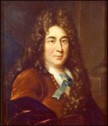Charles Perrault

Charles Perrault (12 January 1628 – 16 May 1703) was a French author and member of the Académie française. He laid the foundations for a new literary genre, the fairy tale, with his works derived from pre-existing folk tales. The best known of his tales include Le Petit Chaperon rouge (Little Red Riding Hood), Cendrillon (Cinderella), Le Chat Botté (Puss in Boots) and La Barbe bleue (Bluebeard). Many of Perrault's stories were rewritten by the Brothers Grimm, continue to be printed and have been adapted to opera, ballet (such as Tchaikovsky's The Sleeping Beauty), theatre, and film (Disney). Perrault was an influential figure in the 17th century French literary scene, and was the leader of the Modern faction during the Quarrel of the Ancients and the Moderns. Charles Perrault was born in Paris to a wealthy bourgeois family, the seventh child of Pierre Perrault and Paquette Le Clerc. He attended good schools and studied law before embarking on a career in government service, following in the footsteps of his father and older brother Jean. He took part in the creation of the Academy of Sciences as well as the restoration of the Academy of Painting. In 1654, he moved in with his brother Pierre, who had purchased a post as the principal tax collector of the city of Paris. When the Academy of Inscriptions and Belles-Lettres was founded in 1663, Perrault was appointed its secretary and served under Jean Baptiste Colbert, finance minister to King Louis XIV. Jean Chapelain, Amable de Bourzeys, and Jacques Cassagne (the King's librarian) were also appointed. Using his influence as Colbert's administrative aide, he was able to get his brother, Claude Perrault, employed as an a designer the new section of the Louvre, built between 1665 and 1680, to be overseen by Colbert. It was chosen over designs by Gian Lorenzo Bernini (with whom, as Perrault recounts in his Memoires, he had stormy relations while the Italian artist was in residence at Louis's court in 1665) and François Mansart. One of the factors leading to this choice included the fear of high costs, for which other architects were infamous, and second was the personal antagonism between Bernini and leading members of Louis's court, including Colbert and Perrault (King Louis himself always maintained a public air of benevolence towards Bernini, ordering the issuing of a royal bronze portrait medal in honor of the artist in 1674.
 čeština
čeština Deutsch
Deutsch English
English français
français polski
polski русский
русский magyar
magyar Azərbaycan
Azərbaycan беларуская
беларуская italiano
italiano ქართული
ქართული қазақ
қазақ Nederlands
Nederlands português
português slovenčina
slovenčina español
español 中文
中文







